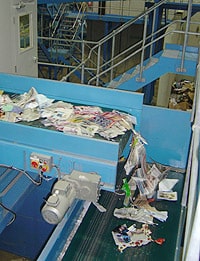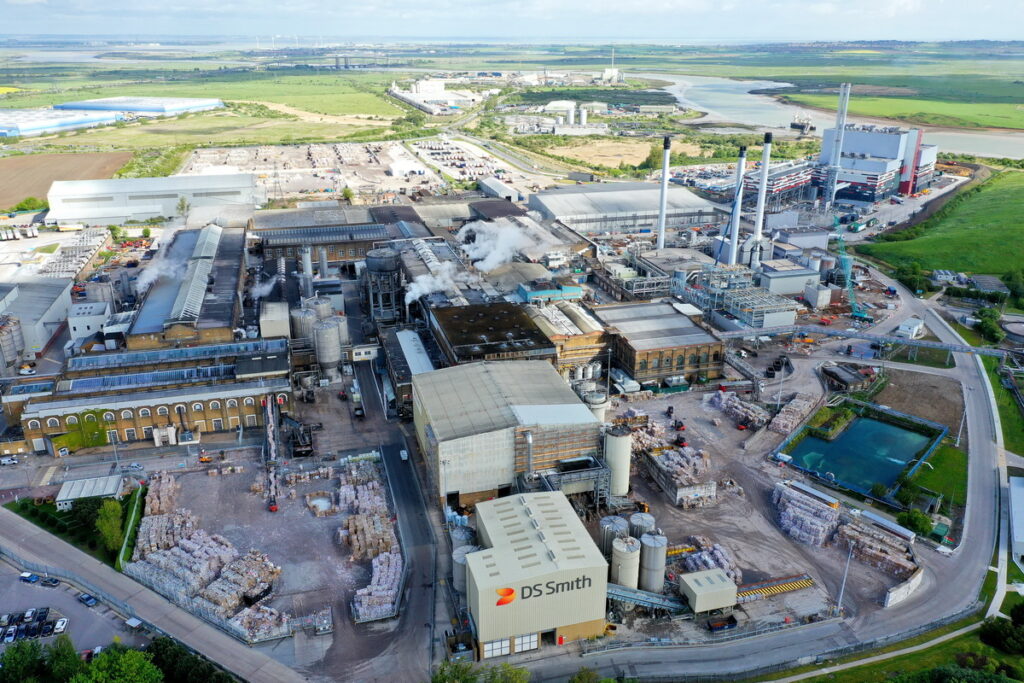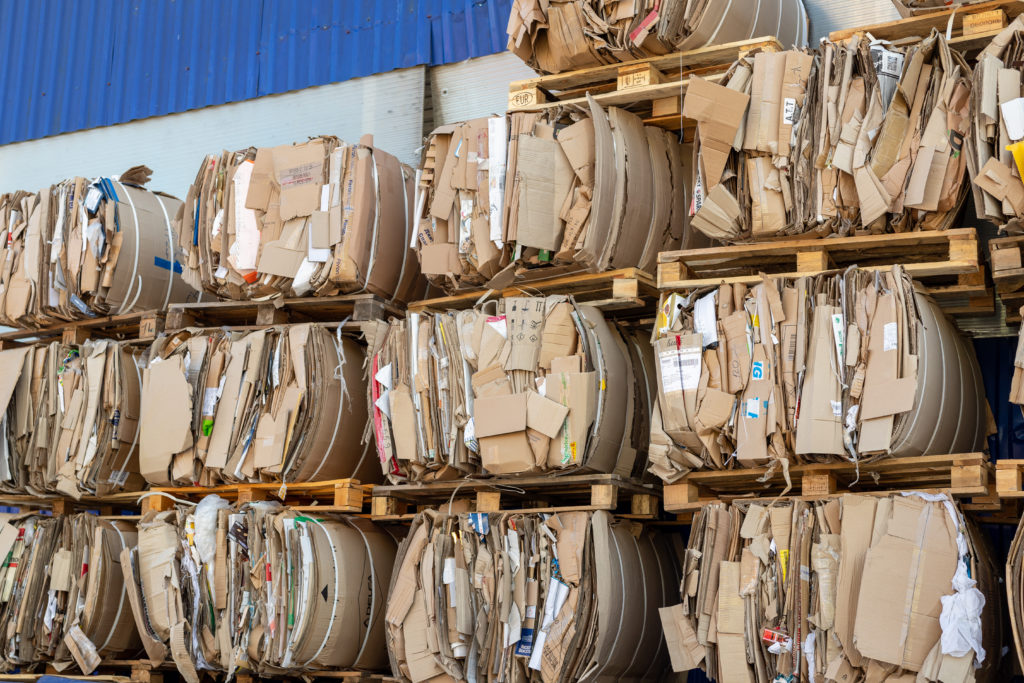And, WRAP says that UK mills using recovered paper should halt any bilateral arrangements they have with specific MRFs and instead publish their standards on their websites for all potential suppliers to see.
 WRAP believes costs could be kept down if paper-only MRFs are used, like this plant in Sheffield, with other recyclable materials kept separate |
The study also proposes that councils should be fined 90 per tonne by MRF operators for waste materials included in recyclables. And in two-tier council areas, it urges that both types of local authorities talk to each other to ensure that they make fully-informed decisions about the costs of collection and sorting.
On the fines issue, the WRAP studies say that efficient MRFs operate within the range of having 2% to 5% residue and “an excess charge (e.g. 90 per tonne) could be made for materials rejected during the processing phase”.
Paper
The study criticises the paper industry for having “ad-hoc” arrangements with UK MRFs and says that the quality standards which it sets are not up to those found elsewhere in Europe.
The report notes that UK quality standards “do not have the clarity of the specifications used in some other countries”. And it goes on to further question the specifications set by UK mills adding that: “MRFs in the UK frequently appear to be guided by rather broad specifications (e.g. <1% contamination) which vary for individual reprocessors and which appear to have fairly ad hoc enforcement arrangements.”
Capacity
The reports say that WRAP believes there is a role for more MRF capacity in the UK, but this capacity needs to be “of the right sort, be in the right place and be capable of delivering quality materials that meet end market requirements.”
To help work out the best size for a MRF one of the studies produced for WRAP looks at costs although work on capacity is continuing with the organisation to say soon where it thinks more MRFs should be built.
While not stated in the reports, WRAP itself is understood to be considering investing in future MRF construction. However, it is wary of facing a potentially tricky situation if material from any plant that it helped fund was to end up in controversial sorting plants in South East Asia, or was found to have unacceptable contamination levels.
Costs
On costs of running MRFs, WRAP says the facilities should aim “to develop as value factories, ensuring that maximum value is obtained from the recovered materials both through sorting and preparing these materials ready for use by reprocessors.”
Research for WRAP shows the variation in the unit cost per tonne for MRFs of different design capacities. It shows that the unit cost per tonne begins to level out with higher volumes going through the plant, typically between 80,000 to 100,000 tonnes per annum, but rises subtantially at lower throughput tonnages.
In the example given in the report, WRAP explains that “the cost of an 80,000 tonnes per year facility operating at full capacity is 40 per tonne, compared to 80 per tonne for a 40,000 tonnes per annum facility.”
Examples are given of running MRFs at below and above design specifications. Running the MRF at above design capacity means that quality standards might not be met. And operating at below capacity is looked at with the example that: “For a facility with a design capacity of 80,000 tonnes per year, the cost differential between operating at full capacity and 50% capacity is almost 20 per tonne.”
Running fully commingled MRFs – where all material is sorted together – costs more, the studies find. WRAP considers an alternative type of MRF is where paper is kept separate from containers. “At a fully co-mingled MRF, more sorting is required to separate out different recyclable materials. For the example facilities included in the cost model, the additional gross processing costs range from 6 per tonne (at an annual throughput of 85,000 tonnes) to 23 per tonne (at an annual throughput of 10,000 tonnes).”
Balers and presorting
The report also gives some practical advice, for example on balers including advising that having back-up arrangements could be useful in case a baler breaks down. The studies warn that “if there is only one baler and it becomes disabled, the entire sorting process can be compromised. It is therefore advisable to consider investing in back-up arrangements which might be access to another baler or appropriate on site storage facilities.”
| Related links: |
And the report advocates that the MRF should have a covered area where materials can be stored for up to two days worth of incoming loads along with pre-sort facilities. The organisation notes that pre-sort facilities are common in America and in Europe but not in all UK MRFs.
The full report is expected to be published on the WRAP website soon at www.wrap.org.uk










Subscribe for free